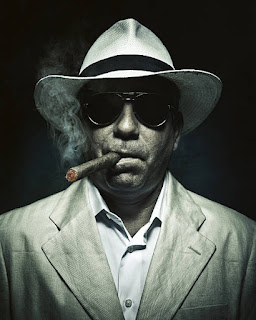WASTE MANAGEMENT
5 Fascinating Facts About the Mafia 본문
The Mafia also known as La Cosa Nostra, has long been a subject of fascination and intrigue. From its origins in Sicily to its prominent presence in New York City, the Mafia has left an indelible mark on the criminal underworld. In this article, we uncovered five captivating facts that shed light on this infamous organization. By exploring its history, structure, code of silence, criminal activities, and the decline of its power, we gained valuable insights into the enigmatic world of the Mafia.
The Mafia's roots can be traced back to early 19th-century Sicily, where it began as a secret society dedicated to protecting the local population. Over time, it transformed into a formidable criminal organization with a strict hierarchical structure. At the top of the hierarchy sits the boss, surrounded by underbosses, soldiers, and associates who ensure the smooth execution of illicit activities.
One of the most notorious aspects of the Mafia is its code of silence, known as "omertà." This code emphasizes loyalty and secrecy among its members, making it challenging for law enforcement to gather evidence and prosecute Mafia members. Breaking omertà is considered a grave offense, punishable by severe consequences, including death.
The Mafia's criminal activities are wide-ranging and lucrative. Extortion, racketeering, drug trafficking, illegal gambling, loan sharking, and murder are just a few of the unlawful endeavors undertaken by the organization. By infiltrating legitimate businesses, the Mafia has been able to generate substantial wealth while maintaining control over various territories.
In the American context, the Five Families of New York stand out as prominent Mafia factions. The Bonanno, Colombo, Gambino, Genovese, and Lucchese families have dominated organized crime in New York City for decades. Each family has its own territory and intricate network of relationships. The stories of their rise to power, internal conflicts, and eventual downfall have become the stuff of legend.
Despite its formidable reputation, the Mafia has faced significant challenges from law enforcement efforts. The passage of the RICO Act in 1970 has provided a powerful tool for prosecuting Mafia members and dismantling their criminal enterprises. Witness protection programs and the cooperation of former Mafia members turned informants have also played a crucial role in weakening the organization. These collective efforts have led to a decline in the Mafia's influence and forced it to adapt its structure and operations.

the Mafia remains a captivating subject that continues to intrigue us with its tales of power, loyalty, and criminal activities. By exploring the origins, structure, code of silence, criminal endeavors, and the decline of its power, we gain a deeper understanding of the complex world of organized crime. While law enforcement efforts have dealt significant blows to the Mafia, its legacy and impact on society are still felt today. The story of the Mafia serves as a reminder of the ongoing battle between those who seek to exploit the shadows and those who strive to uphold justice.
In the American context, the Five Families of New York hold a prominent position within the Mafia's history. These families, namely the Bonanno, Colombo, Gambino, Genovese, and Lucchese families, have dominated organized crime in New York City for decades. Each family has its own distinct territory, hierarchy, and network of relationships. The stories of their rise to power, internal conflicts, and the subsequent decline of their influence have become the stuff of legend, captivating audiences in books, movies, and television series.
Despite its formidable reputation, the Mafia has faced significant challenges from law enforcement efforts. The passage of the Racketeer Influenced and Corrupt Organizations Act (RICO) in 1970 provided a powerful legal tool to prosecute Mafia members and dismantle their criminal enterprises. This legislation allowed authorities to target not only individual criminals but also the entire structure of organized crime. Witness protection programs and the cooperation of former Mafia members turned informants have also played a crucial role in dismantling the organization from within.
